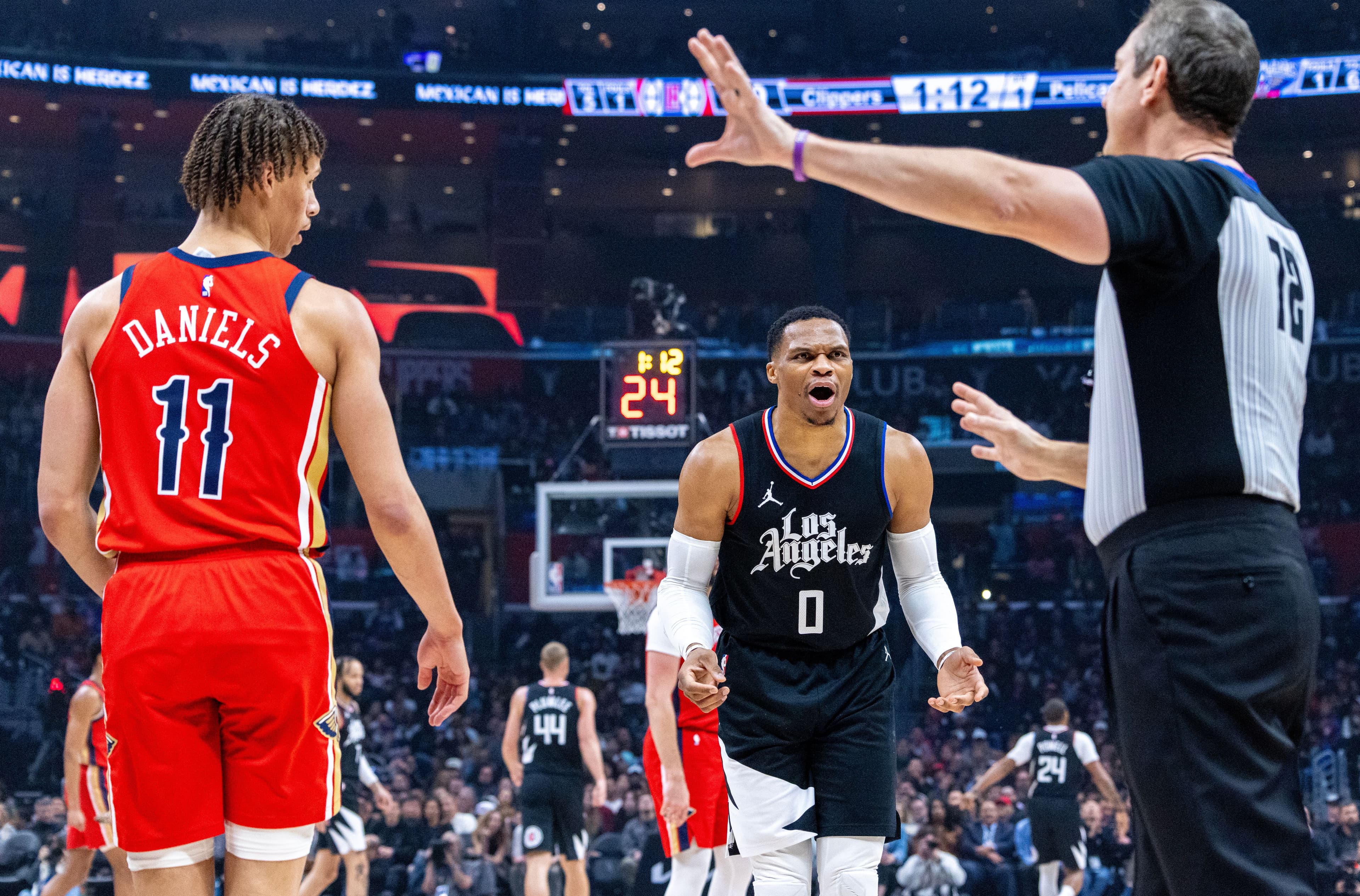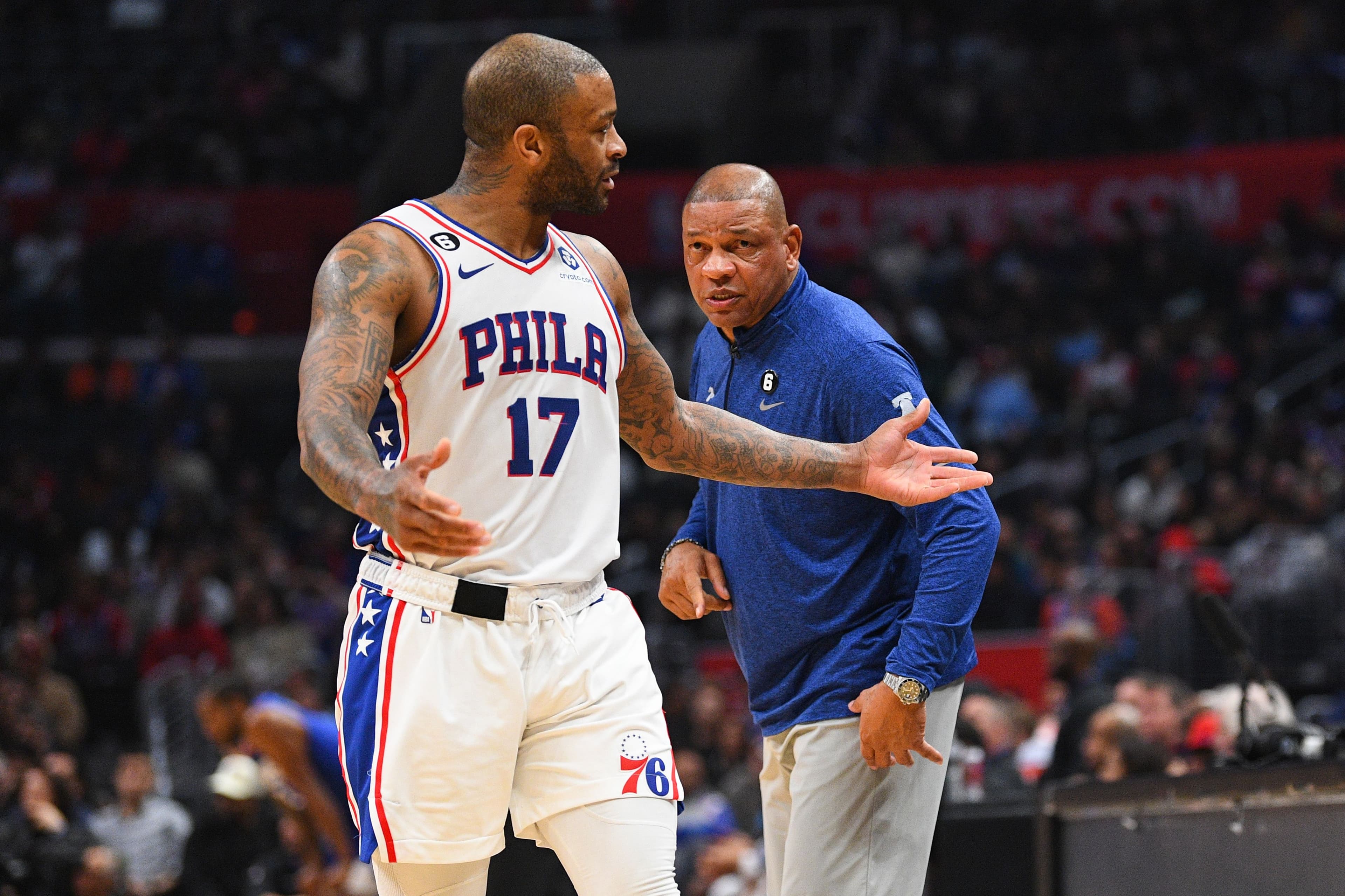NBA
NBA Foul Rules Explained: How Many Fouls to Foul Out?
In the National Basketball Association (NBA), a player fouls out after committing six personal fouls during a game.

LA Clippers guard Russell Westbrook//Getty images
What is the Difference Between NBA and FIBA Foul Rules?
The National Basketball Association (NBA) games are officiated according to its own set of basketball rules, but they are not identical to those of The International Basketball Federation (FIBA).
In the NBA, a player fouls out after committing six personal fouls during a game. However, if the game goes into overtime, the foul limit remains the same. For technical fouls, the number depends on whether they are in addition to personal fouls.
Technical fouls – regarded as fouls for conduct contrary to the spirit of the game – generally do not count toward the personal foul total. So, a player can have five personal fouls and one technical foul without fouling out. However, receiving six personal fouls still disqualifies the player, regardless of how many technical fouls they have. Two technical fouls for a player or coach, however, would lead to an automatic ejection.
Flagrant fouls are a separate category, divided into FF1 (unnecessary contact) and FF2 (unnecessary and excessive contact). Two FF1 fouls or one FF2 foul would lead to an ejection.
Under FIBA rules, players have fouled out once they have committed five fouls, as opposed to the NBA’s six. Unlike in the NBA, personal and technical fouls are counted together under FIBA rules.

Doc Rivers and Philadelphia 76ers //Getty images
As per these rules, a player who has committed two technical fouls, two unsportsmanlike fouls or one unsportsmanlike foul and one technical foul is ejected.
One commonality between FIBA and NBA rules is that coaches can be ejected for committing two technical fouls. Under FIBA rules, a third technical foul called on the bench can also lead to an ejection.
The Olympics uses FIBA rules rather than NBA rules, so a challenge for Team USA when they chase a gold medal is for their players to adapt.
Are NBA Foul Rules Harsher on Defensive Players than FIBA?
FIBA foul rules tend to be more lenient towards defensive players than NBA rules are.
Under NBA rules, players are prohibited from touching the ball when it is on a downward trajectory towards the basket. They are also forbidden from making contact with the ball when it is above the hoop and within the imaginary cylinder.
In FIBA-sanctioned competitions, players are only forbidden from touching the ball when it is on a downward flight towards the hoop. However, they may touch the ball once it has hit the rim, even if it remains within the imaginary cylinder.
In the NBA, players do not have the freedom to stay in the lane for more than three seconds if they are not actively guarding an opponent. Should they fail to heed this rule, a technical foul is called against them.
Under FIBA rules, there is no defensive three-second rule, allowing defensive players to crowd the paint near the basket.
| Governing body | Personal foul limit | Rules on touching the ball on downward flight | Three-second violation rule | Personal & technical fouls counted together |
| NBA | 6 | Players forbidden from touching the ball in downward flight and after it hits the rim if it remains in the imaginary cylinder | Defenders must move out of the paint if there are no offensive players in it after three seconds. | Yes |
| FIBA | 5 | Players may only touch the ball once it has hit the rim, even if it remains within the imaginary cylinder.
| N/A | No |
Leonard Solms is a freelance journalist who has been covering local and international sport from South Africa since 2015. Best known for his work for ESPN, he has also written for Al Jazeera, The Continent, New Frame, Planet Rugby and GiveMeSport among several other publications.